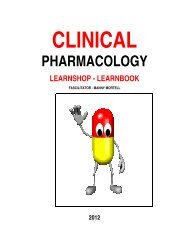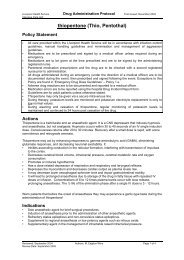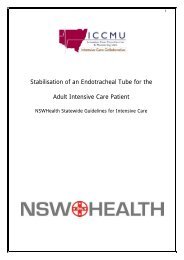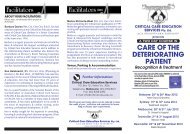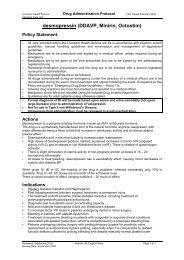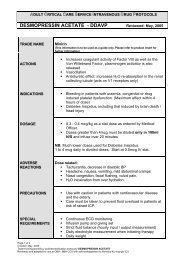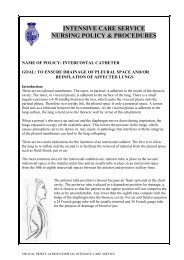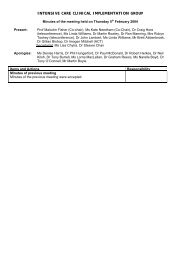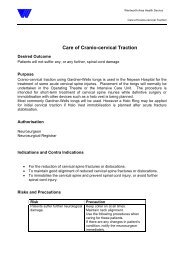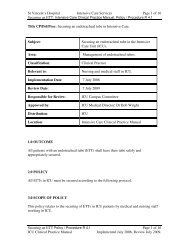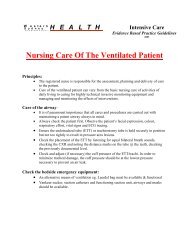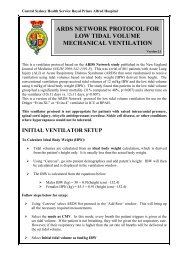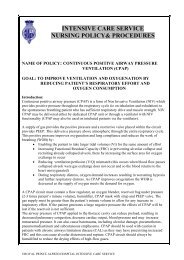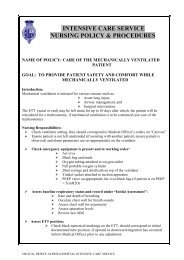A quick reference guide to haemofiltration and renal failure March ...
A quick reference guide to haemofiltration and renal failure March ...
A quick reference guide to haemofiltration and renal failure March ...
You also want an ePaper? Increase the reach of your titles
YUMPU automatically turns print PDFs into web optimized ePapers that Google loves.
FILTRATION<br />
Filtration is defined as the movement of water through a<br />
permeable membrane caused by a pressure gradient. High<br />
molecular weight substances are separated by the membrane<br />
according <strong>to</strong> their size. (Dorl<strong>and</strong> 2003:702)<br />
In <strong>renal</strong> replacement therapy, it is the process by which plasma<br />
water <strong>and</strong> filterable solutes are separated from whole blood<br />
across a semipermeable membrane as a result of transmembrane<br />
pressure. (Bellomo, Ronco <strong>and</strong> Mehta, 1996:S6)<br />
Positive pressure forces solutes through the membrane.<br />
Compare this with your garden hose…think of the tap as the blood pump, <strong>and</strong><br />
the nozzle as the resistance offered by the return of blood <strong>to</strong> the patient.<br />
The hose now becomes the membrane, if holes are punched along the surface<br />
of the hose pipe. The more you turn the ‘tap’ on (the blood pump), <strong>and</strong> /or<br />
the more you constrict the nozzle (pts vascular access), the greater the<br />
pressure inside the hose. The higher the pressure, the further the water<br />
will squirt out of the holes, <strong>and</strong> the more water you will lose across the<br />
membrane.<br />
Annaal looggyy<br />
15



